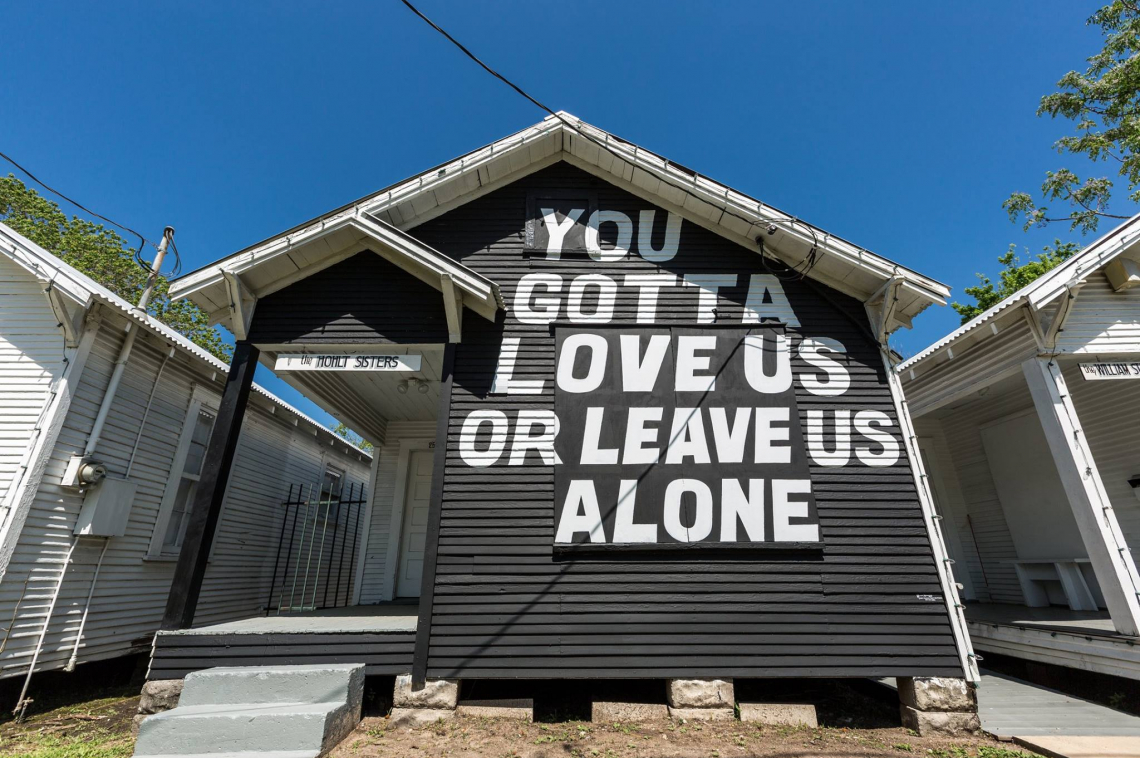
In 2015, ArtPlace commissioned independent researcher Danya Sherman to lead an exploration of the intersection of arts, culture, and housing outcomes—with a special focus on work that seeks to build and maintain high-quality housing for low- and moderate-income people and families. Her investigation encompassed housing trends ranging from the affordability crisis and equitable development to homelessness and vacancy.
Of course, many of the housing challenges communities face today are the result of racist policies and practices that go back generations. This month, the ArtPlace blog is featuring a variety of racial justice stories that illustrate ways individuals and organizations are successfully working to uproot inequities and help achieve a more level playing field for all residents.
Danya’s analysis uncovered six primary ways creative placemaking strategies are helping to meet affordable housing goals; one of them was “stabilize vulnerable communities.” Below, we highlight one of the case studies in Danya’s housing field scan (titled Exploring the Ways Arts and Culture Intersects with Housing: Emerging Practices and Implications for Further Action): Project Row Houses.
Many community-based groups have found arts strategies crucial in their efforts to stabilize communities who are particularly vulnerable to displacement, including those weakened by historic or ongoing neglect or uneven funding. These are most often communities of color and Indigenous communities.
Project Row Houses (PRH), an early practitioner of arts-, culture-, and community-based housing development, works to preserve and celebrate a mixed-income African American community in the historic but rapidly gentrifying neighborhood of Third Ward in Houston, Texas.
PRH formed in the 1980s as a project by and for local African American artists who began by salvaging and preserving several vernacular row houses for artists’ studios and galleries. Building on the attention they received as innovative, socially engaged artists, PRH has since preserved and developed over 50 units of housing and continued to build spaces for galleries and artists in the culturally historic row house style.
More recently, Third Ward, which is located close to downtown Houston, has seen increasing real estate development pressure that is making it difficult to retain the historic African American community and neighborhood environment, especially for those of low and moderate incomes who are particularly vulnerable to long-term unemployment.
To extend their reach, PRH recently began partnering with churches, landowners, renters, politicians, and others in the neighborhood to convene the Emancipation Economic Development Council. The Council is pursuing several strategies, including land trusts and anchor institution development, to address community stabilization and wealth creation comprehensively—and in ways that acknowledge structural dynamics, but that begin, necessarily, with people’s ability to remain in housing. Such a diverse coalition model allows the PRH arts practitioners on the Council to “stay nimble,” focus on what they know best, and tap the expertise of other community leaders who have different skill sets.
PRH’s holdings now encompass five city blocks and 39 structures that house a variety of creative initiatives. These include affordable studio space, community markets, and programs that encourage artists to extend their practice outside the studio and into the social context through mentorship, commission-based work, and public art opportunities—all of which emphasize the neighborhood’s culture and history.
***
- Read more about how arts and culture strategies can help communities secure affordable housing on ArtPlace’s Research Strategies: Housing page
- Learn more about ArtPlace field scans
- This post only skimmed the surface: see much more about Project Row Houses on their website and Twitter





